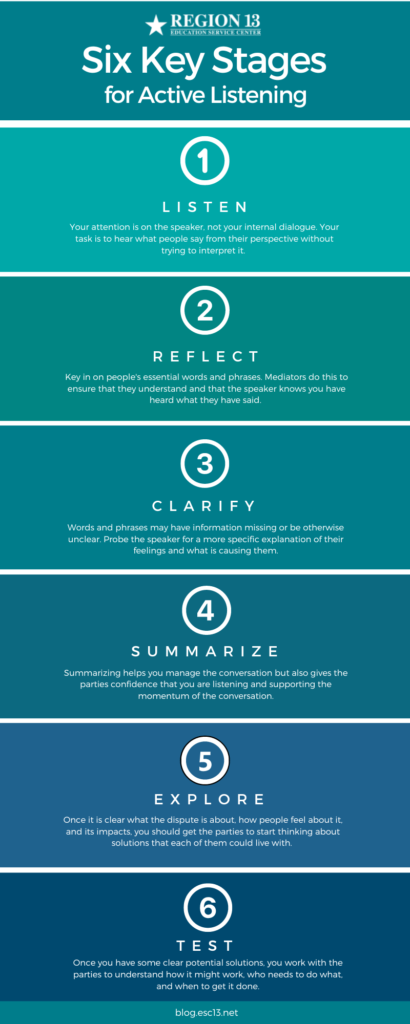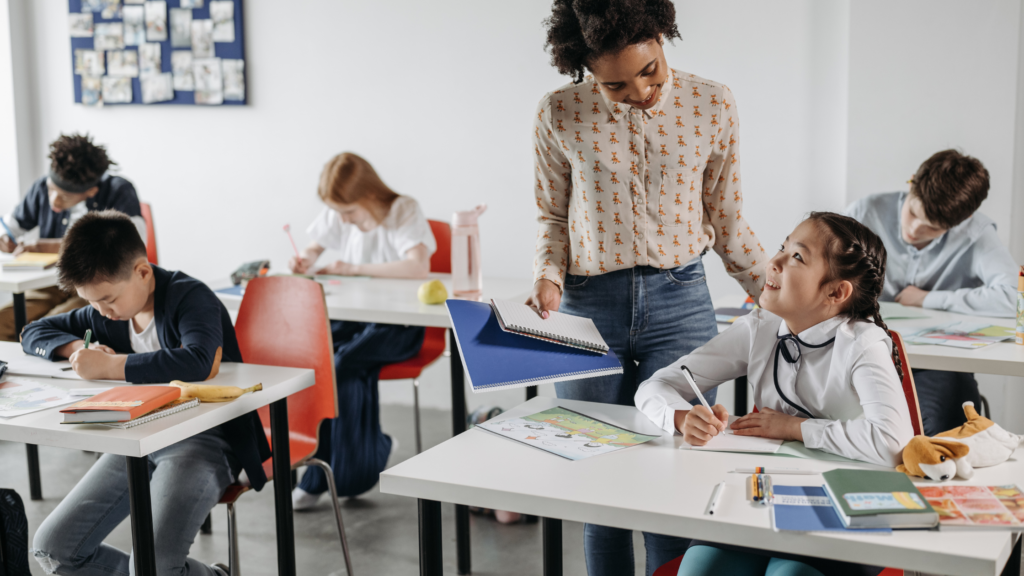Think about how much information you get every day from listening. Your boss, your colleagues, and your students communicate with you often. How much of what all these people say do you pay attention to? How much are you actually remembering from these conversations? Chances are, it’s a lot less than you think!
As educators, we strive to give information, teach and share, but one of the most important things we can do is listen. A lot of times, we act as if we’re listening to the other person. But the reality is that our minds are racing to other topics or planning what we will say in return. This means we can miss important things that the other person is saying.
Active listening is consciously trying to hear and understand others and communicate effectively. Listening strengthens relationships and demonstrates attentiveness, caring, and respect. Listening is more than just hearing, however. To truly listen, you must give your undivided attention and put your own agenda and needs aside.

Let’s look at how active listening can build a positive school culture.
Engaging Students Starts with Active Listening
Sometimes our students just want someone to listen to them. Listening strengthens relationships and demonstrates attentiveness, caring, and respect. As teachers, we tend to want to “fix” our students’ problems for them. But if our minds are busy coming up with solutions for them, we fail to truly listen.
Active listening takes thought, practice, and a desire to put your student’s feelings above your own. Using these skills can make a meaningful difference in a student’s life.
As we actively listen to our students and increase engagement, we build those relationships that lay the foundation for positive school culture and climate. We also contribute to the belonging of others. This is an essential social skill for educators.
Building Students’ Listening Skills
After we as educators have committed to and realized the value of listening, we can teach our students to do the same. Teaching students to actively listen is a skill that will have not only academic but lifelong benefits.
These benefits include a better teacher-student relationship, reduced tension and hostility in the classroom, improved communication and trust, and a positive classroom atmosphere and a safe environment.

Use these six active listening activities with your students:
- Mindful Listening Meditation: This meditation teaches students how to tune out their thoughts and tune into the sounds surrounding them, a strategy that directly connects to active listening.
- String Telephone Project: A listening activity with a STEM component! Build these string telephones as a class and discuss how sounds travel.
- Listening with Openness Group Activity: This group activity can teach students how to take turns and listen during a classroom discussion.
- Simon Says: Did you know that this classic game can help students learn to listen? Try any of the ten variations included in this resource, then have a discussion on listening to and following directions.
- Outdoor Sound Scavenger Hunt: Head outdoors for this active listening game as students identify and find different sounds around your school.
- Active Listening Conversation Partners: Pair up your older students and have them practice active listening skills with their conversation partners for a few minutes at a time.
As you intentionally build upon active listening skills, you’ll make strides toward developing the positive classroom and school environment you desire.
Lisette is a Behavior Specialist and Facilitative Mediator here at ESC Region 13.






Add comment